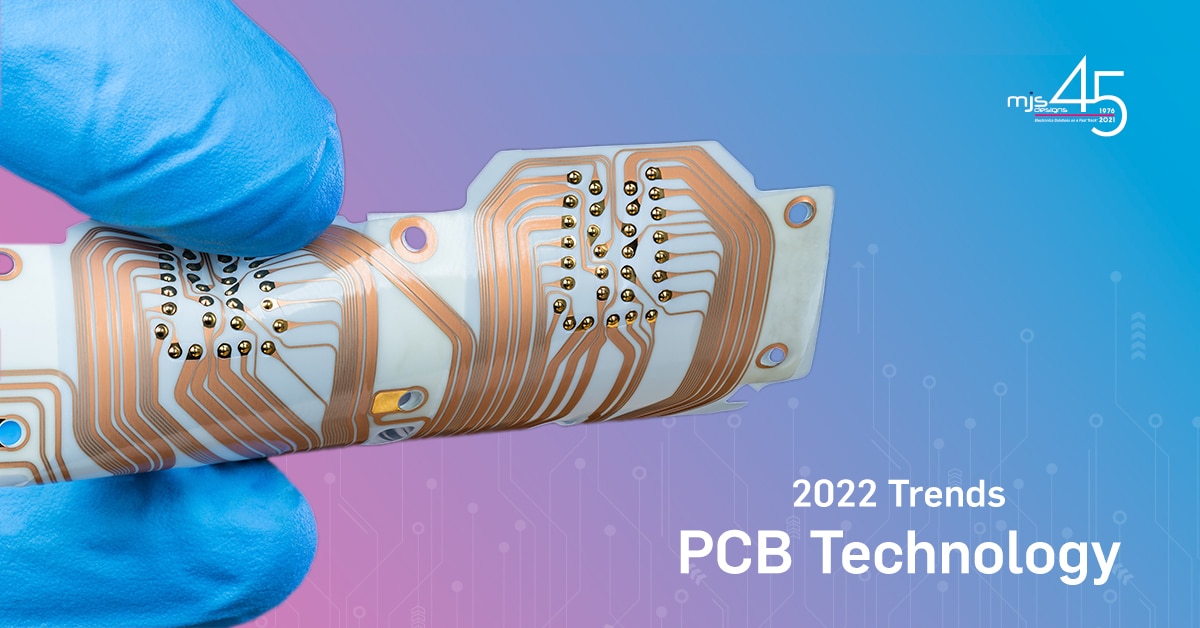PCB Design
The rapid expansion of technologies calls for changing design and assembly processes across the industry. Whether it is printed circuit board (PCB) design, circuit board repair, or other electronic engineering, there are current technologies that might be right for your project.
“Our team focuses on the client needs throughout the entire design and assembly process,” said Neil Munzinger, Director of Business Development with MJS Designs. “Since a portion of our projects are part of the Internet of Things (IoT), it is extremely important for us to be prepared to offer solutions that keep up with the latest hardware design and manufacturing trends.”
Here are some top technologies in PCB design in 2022:
High-Density Interconnect PCBs
One growing trend in printed circuit board design is high-density interconnect (HDI) boards. As the need for smaller assemblies increases in several industries, the need for smaller and more lightweight PCBs increases, as well. HDI PCBs allow for a higher circuit density per unit compared to conventional boards, effectively packing more functionality into a smaller area.
One way that these PCB designs are able to meet their space requirements are through the mixed used of buried vias, blind vias and microvias creating two or more layers to in the design.
High-Speed PCBs
High-speed PCB design and layout addresses issues of signal integrity, power integrity, and electromagnetic interference (EMI) by reimagining the board’s design to leverage specific features for optimal layout and signal routing. Some things engineers look at when optimizing a high-speed PCB are net count, routing density, and number of interfaces per layer.
Properly redesigning a PCB layout to follow high-speed board design guidelines can reduce issues with signal integrity and interference to unnoticeable levels and maintain ideal performance specifications in the final assembly.
High-Power PCBs
High-power PCBs are seeing a rise in interest as modern devices lean toward higher power consumption. These boards are made of heavy copper to handle increased power consumption while being resistant to higher temperatures for prolonged periods of time. Not only are they resistant to thermal fluctuations, but they tend to be smaller in size with increased mechanical strength. We could see an increase in demand for this type of board in industrial, military and aerospace applications in the coming years.
MJS Designs is your PCB Design Company
When it comes to printed circuit board design, our team is highly experienced and ready to start your next project. Whether for aerospace engineering, innovative IoT technologies, or military test solutions, our advanced Certified Interconnect Designers (CID+) work diligently to ensure successful outcomes for each client.
MJS Designs has over 45 years of experience and a reputation for quality work. Our team regularly attends conferences, workshops, and classes to maintain an in-depth knowledge of the latest industry standards for our clients. To learn more about the wide scope of solutions we offer to bring your project to life, email sales@mjsdesigns.com.

